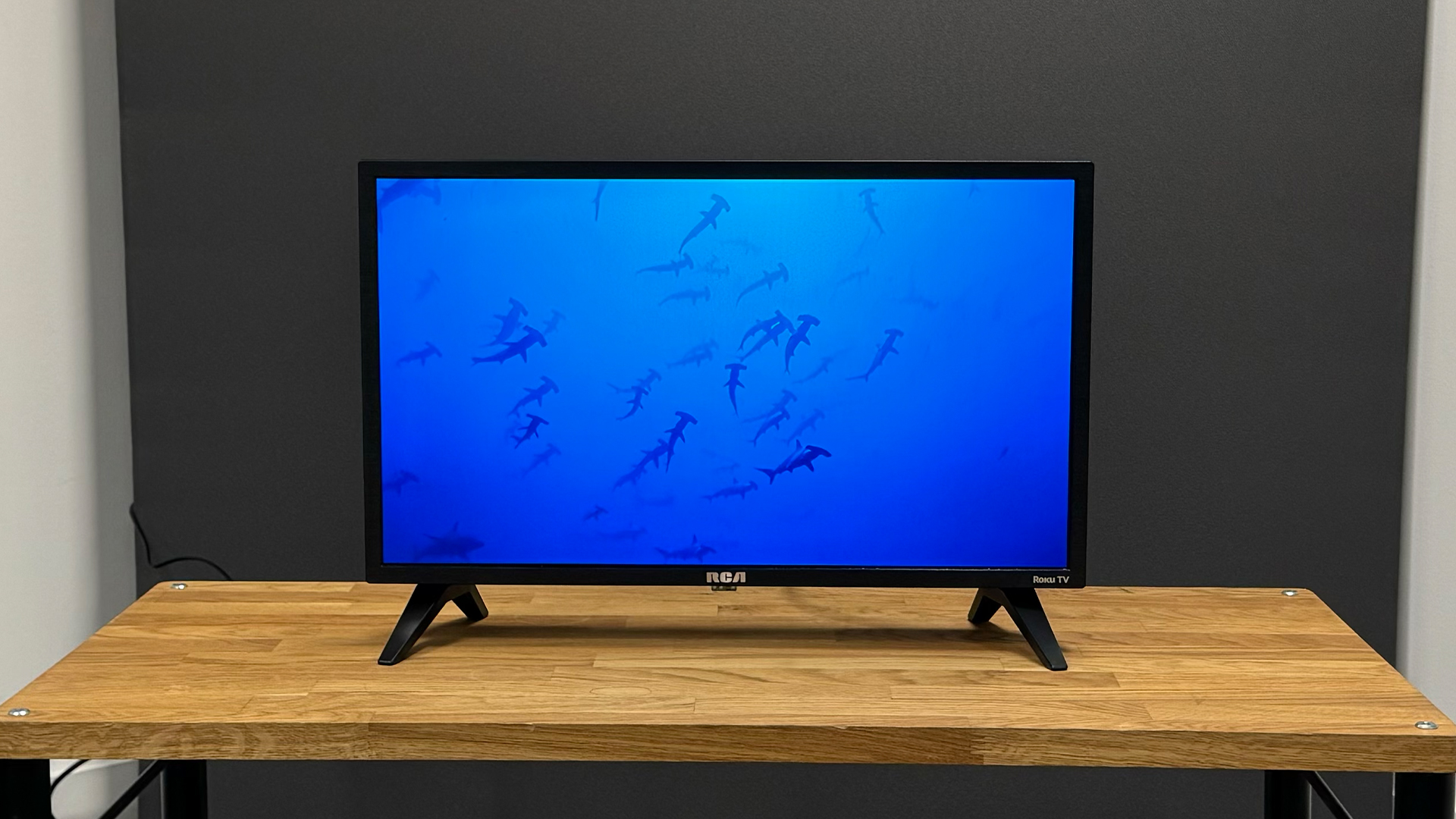
The budget TV world is so crowded these days that it’s tempting to think any new brand wanting to join the fray must be either working on Dutch courage or simply a bit mad. On the admittedly literally small evidence of its RK24HF1 24-inch TV, though, it could just be that relative newcomer RCA really does know what it’s doing.
Price
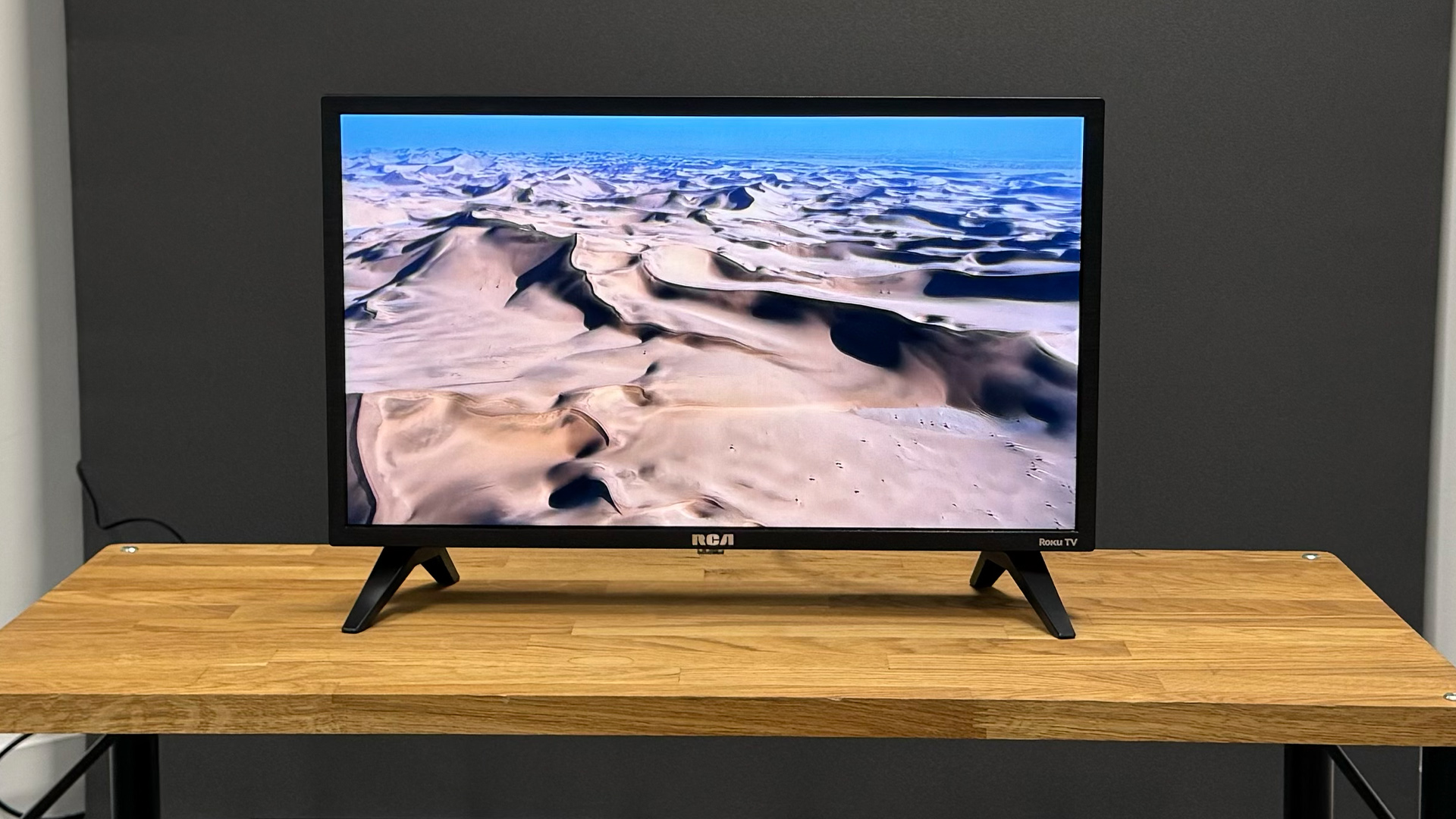
At £136, the RCA RK24HF1 Roku TV is cheap even by the generally price-sensitive standards of today’s 24-inch TV market. It’s more than £30 cheaper than the recently reviewed Samsung UE24N4300, for instance. Which means it joins recent Roku-based TVs from the likes of TCL, Hisense and Logic in targeting the budget end of the TV world.
While RCA sells TVs in the US and Australia, its range in those territories doesn’t go smaller than 32 inches. Only us Brits, it seems, still want TVs smaller than that.
Design
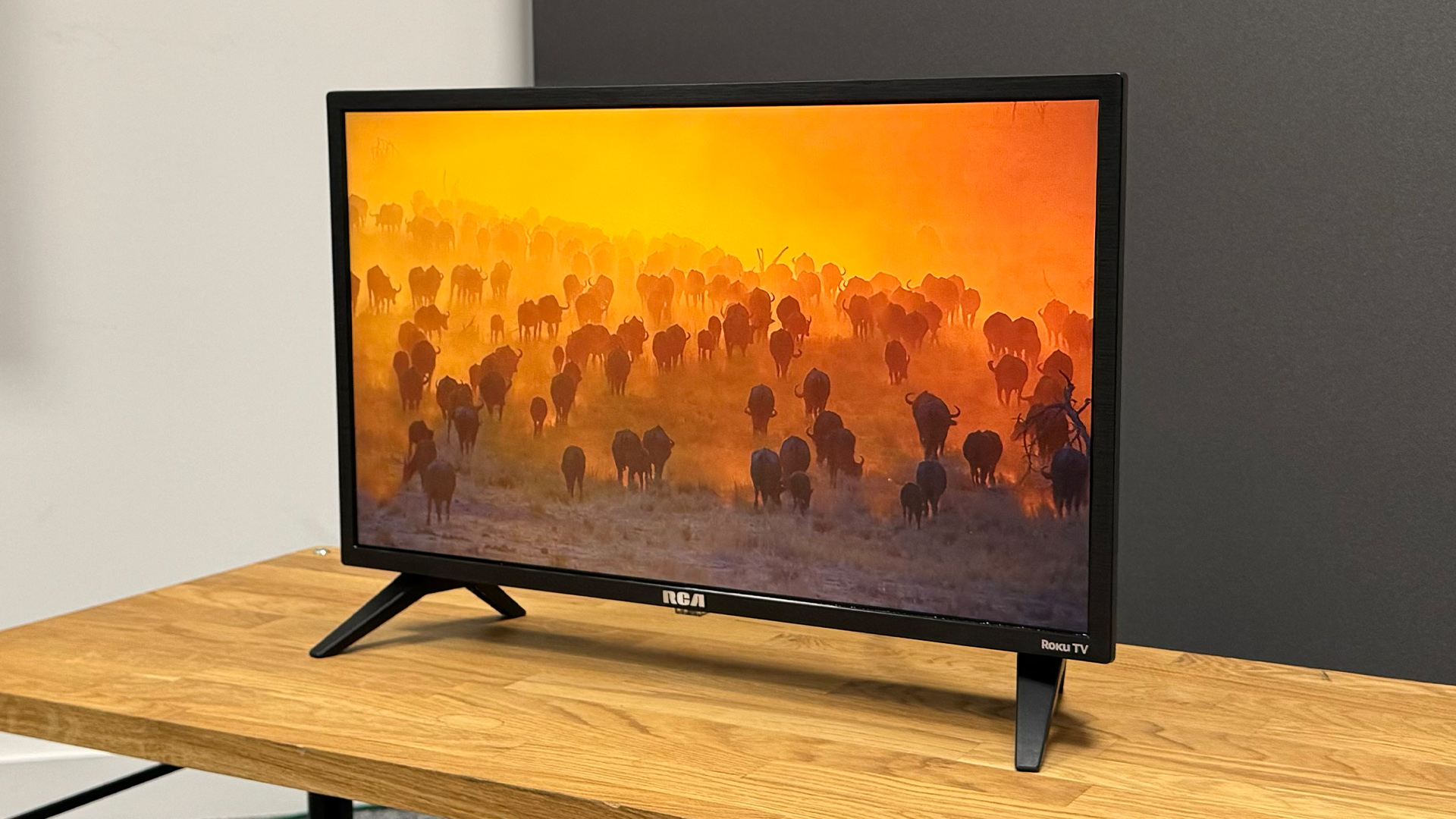
Compared with the surprisingly heavy-duty Samsung UE24N4300, RCA’s RK24HF1 24-inch TV is almost shockingly lightweight. Even with its ultra-basic feet attached, it weighs so little a toddler could easily tuck it under their arm and wander around with it. Not that we’d suggest they were allowed to do such a thing, obviously.
We guess this makes the RK24HF1 a particularly portable TV if that matters to you. But it also raises concerns about both the quality of its internal components and its ability to withstand any knocks it might incur while you’re carting it around.
The RK24HF1’s bezel, rear and feet are all made from pretty basic-looking black plastic, and the bezel and rear are both more prominent than you might expect of a 2024 TV. The crisp RCA and Roku TV logos on the screen’s bottom edge liven things up a bit, but overall the RK24HF1 looks a little dated and cheap.
It ships with a similarly dated-looking and lightweight remote control. To be fair, though, this remote control is quite effectively organised – not least because it draws on all of Roku’s decades of experience with remote control ergonomics.
Features
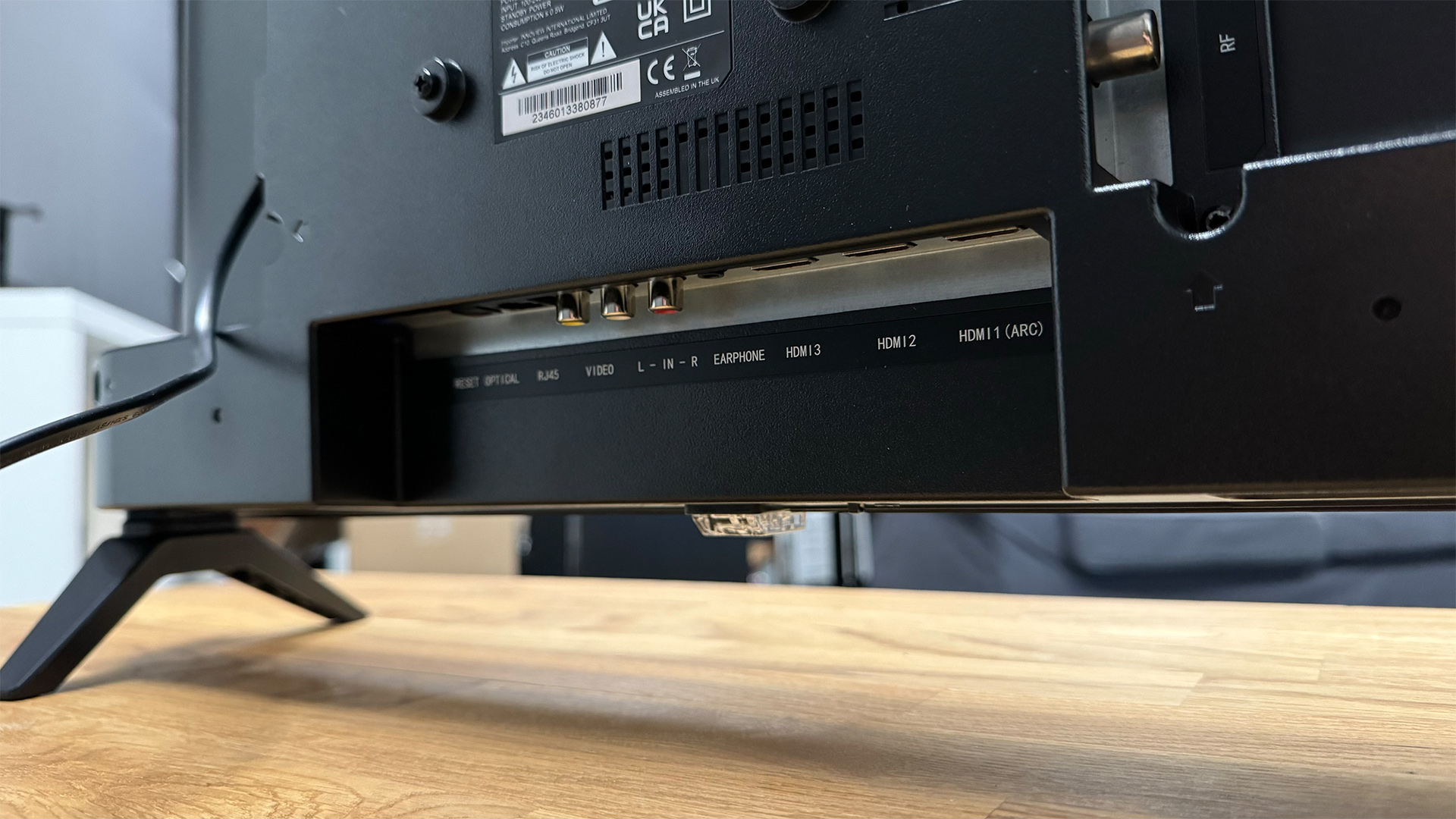
The main features of the RCA RK24HF1 are its eye-catchingly affordable price and built-in Roku smarts. If you’re not familiar with Roku, you might think from simply looking at its menus that it’s a pretty basic system compared with the more glamorous looks of smart TV platforms such as LG’s webOS and Samsung’s Tizen services. In reality, though, the Roku system’s basic look is the well-researched result of a laser-focused desire to keep things as simple as possible for end users.
Particularly welcome and effective is the way the list of content icons that dominates the home page includes the set’s inputs as well as streaming and gaming apps. You can easily customise its source running order, too. The fact that it doesn’t try to do anything too clever in terms of pop-up windows, content recommendations and the like actually feels quite refreshing in its simplicity versus the much more complicated smart TV systems of more premium TVs.
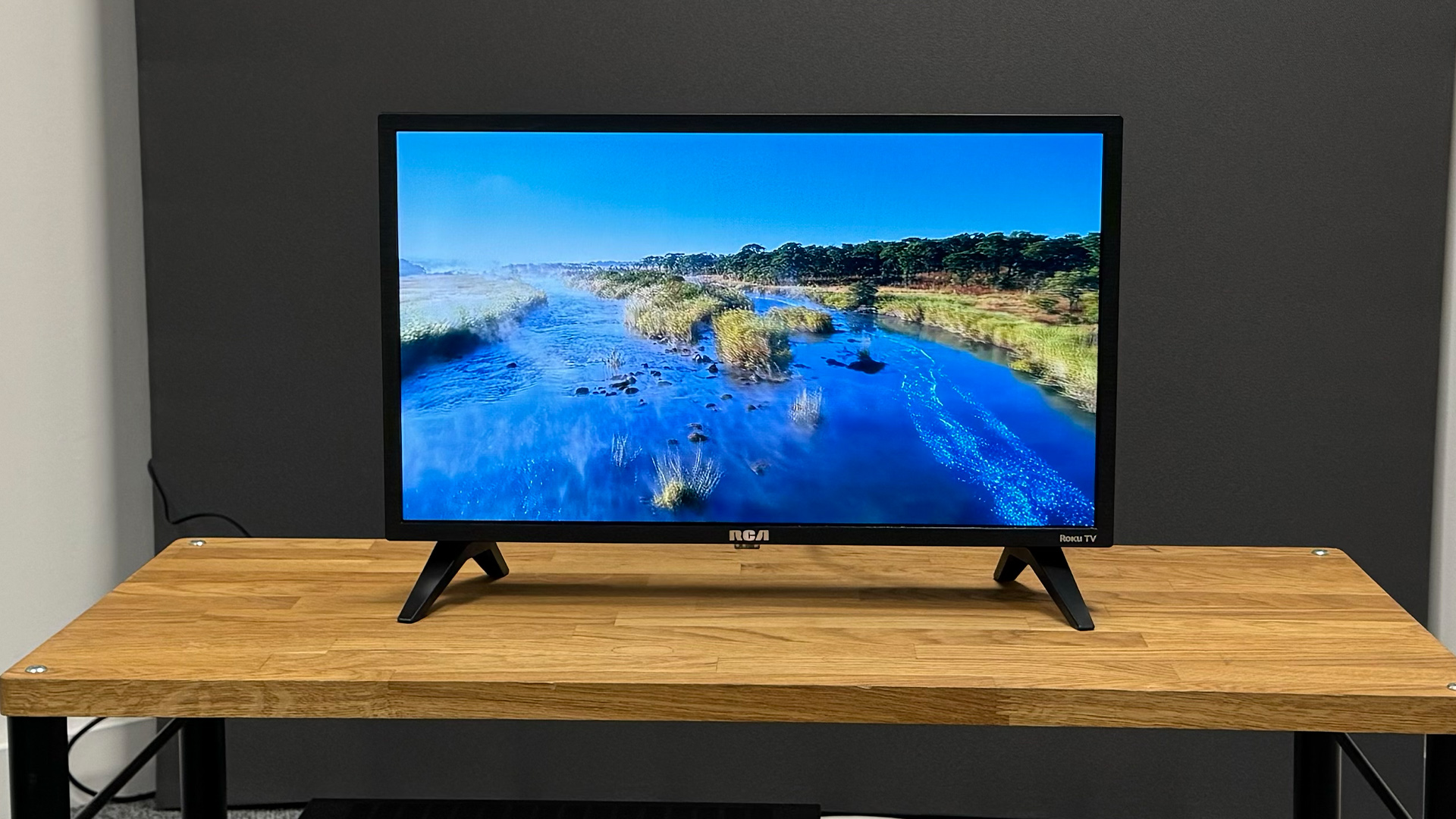
Type LCD (VA)
Backlight Direct LED
Resolution 1280 x 720
HDR formats None
Operating system Roku
HDMI inputs x 3
Gaming features None
ARC/eARC ARC
Optical output? Yes
Dimensions (hwd, inc. stand) 38 x 55 x 18cm
The amount of content the Roku platform carries is immense, too. From Netflix and Disney+ to Prime Video and Freeview Play, everything is there. Having such a combination of simplicity and comprehensiveness at your fingertips makes it very easy indeed to live with the interface’s slightly drab presentation.
RCA claims that the RK24HF1’s screen is a premium LED affair capable of producing richer tones than its basic models. It uses a VA panel type, with a native HD Ready resolution of 1280x720. And yes, it does feel weird to be talking about HD Ready TVs again in these days where pretty much every TV you can buy is a 4K or 8K model. But then we guess fitting a 4K pixel count inside a 24-inch screen would be way more trouble than it's worth given how little visible difference it would likely make to picture quality.
The RK24HF1’s near obsession with keeping things simple extends to its picture features. Pretty much the only important tool available to you is the option to adjust the picture’s brightness using simple one word descriptions – ‘bright, brighter, brightest’ and so on – rather than the usual rather meaningless numerical brightness adjustments. Personally, we would have appreciated a bit more fine-tuning over the picture settings, but it’s hard not to admire how Roku tries to think like regular people think.
Unlike a surprising number of other 24-inch TVs, including the Samsung UE24N4300, the RK24HF1 does not support any form of high dynamic range playback. Nor is there support for cutting-edge gaming features such as 4K/120Hz and VRR – but you won’t find these gaming features on any other 24-inch TV either.
The RK24HF1 is pretty well connected. Its three HDMIs are particularly generous by small TV standards, and these are joined by a USB port, the inevitable RF tuner input, a headphone jack, and an optical audio output. The connectivity also supports control of the TV via Roku’s admirably straightforward iOS/Android app, as well as support for the Apple AirPlay, Apple Home, Alexa and Google Home wireless connectivity platforms.
Picture
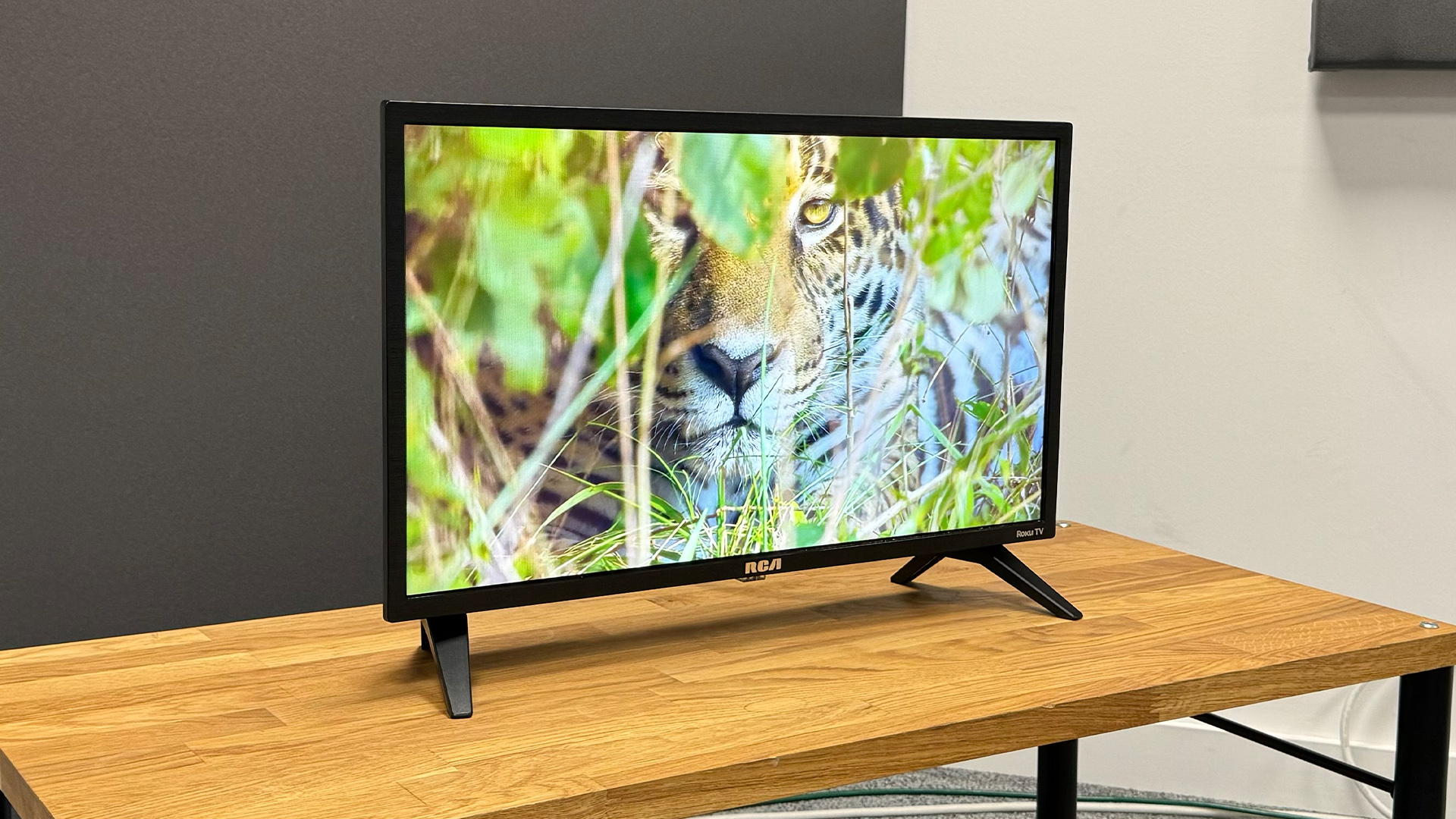
The RCA RK24HF1 Roku TV’s picture quality – as with numerous other cheap and cheerful Roku-based TVs we’ve seen over recent years – is surprisingly enjoyable.
The first thing that strikes us about it after recently spending time with Samsung’s UE24N4300 is how bright it is. Even though it doesn’t (arguably quite sensibly) bother trying to support HDR sources, its pictures pop off the screen with much more intensity and punch than those of the Samsung. Which is, of course, just what you want from a screen that may well need to compete with the typically bright environments in kitchens, conservatories and the like.
RCA’s claims that the RK24HF1’s screen features a premium colour performance are backed up by a voluminous palette that has no trouble at all ensuring that saturations ‘keep up’ with the screen’s surprisingly potent brightness. So instead of bright shots starting to look pale and faded, they actually just keep getting more vibrant the brighter they get. Just as they should.
While a lack of tonal subtlety can leave some bold colours looking a bit cartoonish at times, the RK24HF1 avoids the strange compressed, ‘clumpy’ look to areas of what should be fine colour detail during dark scenes that the Samsung UE24N4300 suffers with.
The RK24HF1 sees off its Samsung rival, too, with its clarity and sharpness. This is arguably the most surprising strength of RCA’s screen given how often budget LCD TVs of all sizes tend to suffer with motion blur or poor colour mapping – but there’s no question that it manages to deliver even tough stuff such as sports events and 24p films without suffering major resolution loss or lag.
The RK24HF1’s sharpness helps pictures enjoy a good sense of depth and three-dimensionality too – a talent that proves particularly useful when using RCA’s screen as a gaming display.
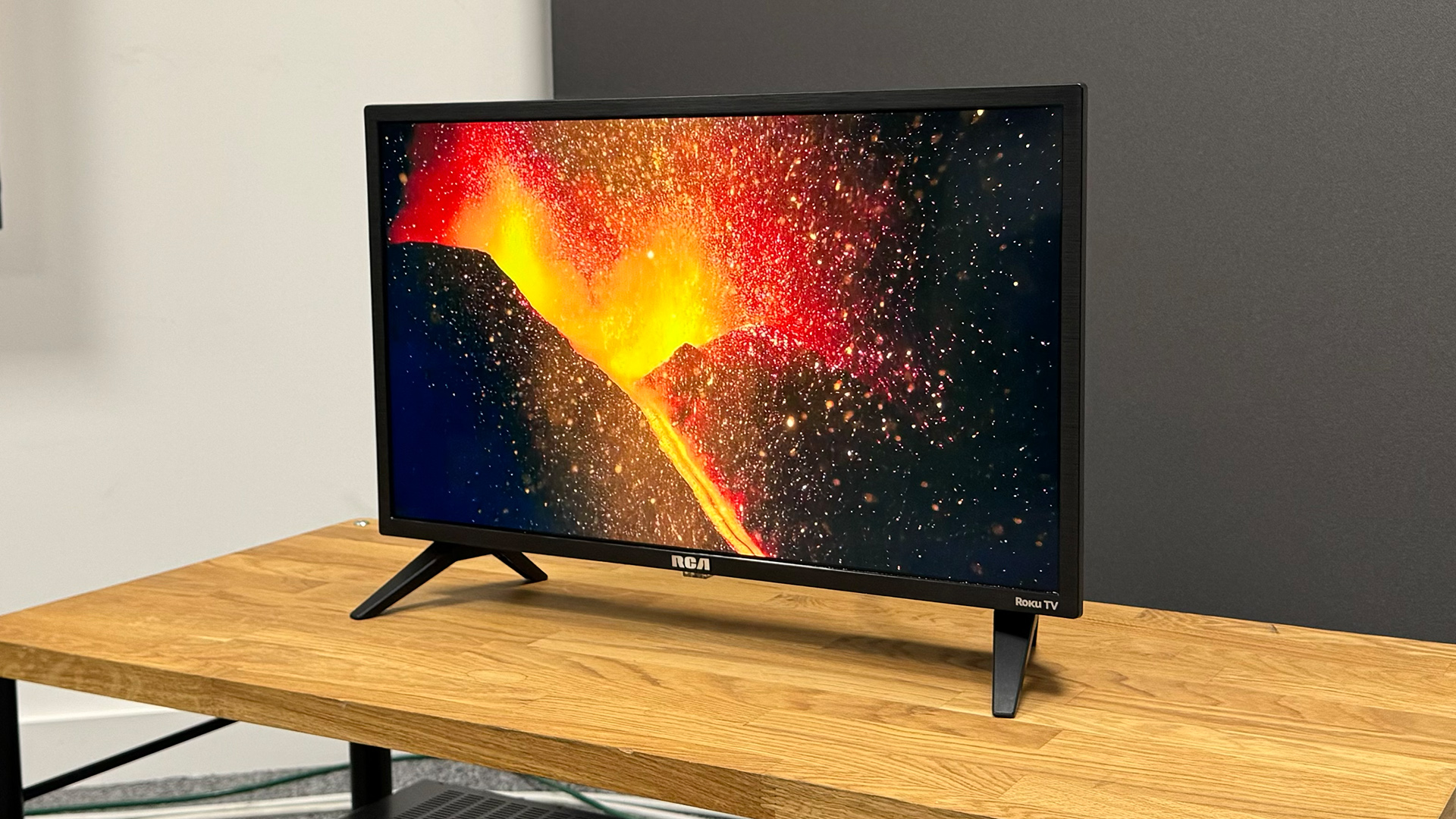
Talking of gaming, the RK24HF1 carries a Game picture preset that gets input lag (the time the TV takes to render images received at its inputs) down to a respectably low 33ms.
Inevitably given its low price and second- rather than main-room focus, the RCA RK24HF1’s pictures aren’t without their limitations. The worst of these is its pretty uninspiring black-level performance. Dark scenes look quite grey or sometimes even a bit blue, especially in the set’s default Standard preset – an issue that can also cause some subtle shading details to go missing in the darkest corners. This is one area where Samsung’s UE24N4300 definitely outguns RCA’s cheaper rival.
The RK24HF1 handles dark scenes much better if you switch to its Movie preset, though, so it’s not a washout for film fans. In any case, though, given the sort of environments the RK24HF1 is likely to find itself in, we’d argue that prioritising brightness over deeper black levels is a pretty valid position. Also, while the Samsung UE24N4300 might deliver much deeper blacks and more shadow detail, the RK24HF1’s much higher brightness means that scenes containing a mix of dark and light content actually enjoy more contrast and punch on the RCA screen.
Despite not suffering with the colour-crushing problem that the Samsung UE24N4300 does, there is a slightly crude feel to the RK24HF1’s colour and sharpness. It’s as if the colour processing can’t render enough shades to reveal every tonal nuance, while the sharpness is being slightly forced – maybe by some background processing trick.
Overall, though, the RK24HF1’s issues amount to much less than we expected from such an affordable TV from a relative unknown quantity of a brand. Especially as the limitations are for the most part in areas where they do relatively little damage in the sort of usage contexts a 24-inch TV is likely to find itself in.
Sound
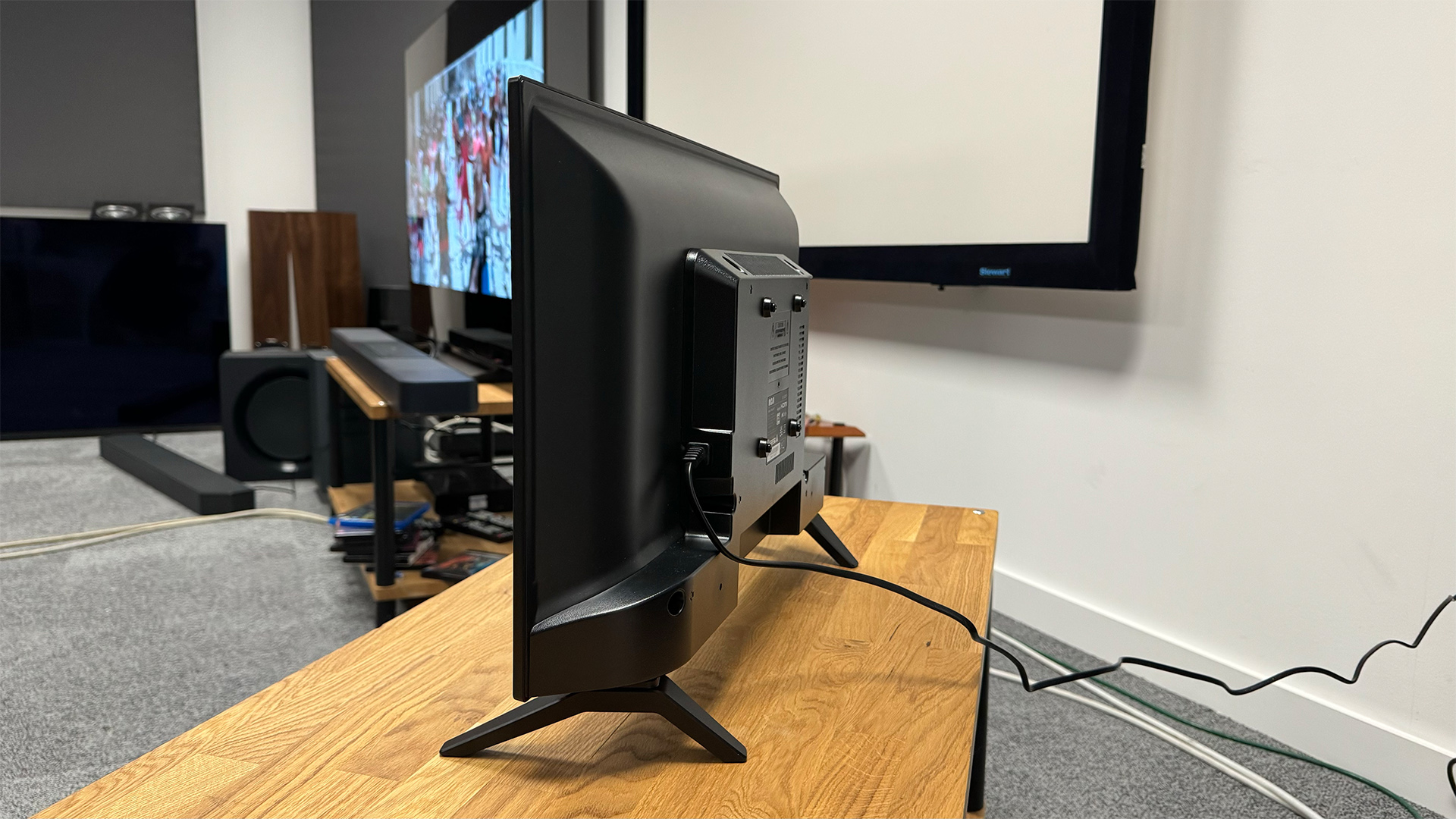
While it’s not really saying much, RCA’s little Roku TV sounds better than most similarly small TVs do. It manages to get louder than expected given its flimsy bodywork, for starters, and combines that bit of extra volume with more direct impact for sharp sound effects. There’s a reasonably rounded tone to the RK24HF1’s sound, too, that extends to more than just dialogue. So while there’s plenty of detail in the presentation, it doesn’t sound unpleasantly shrill or clipped.
Its midrange even has a little headroom to expand into while playing escalating action scenes in games or movies, and the speakers manage to stage the various elements of dense mix moments surprisingly credibly.
Despite the plasticky bodywork, there’s surprisingly little evidence of speaker distortions or cabinet buzzes, either. The only thing that sometimes catches it out is deep bass, which can cause a little crackling to sneak in. The depths of the bass the TV can reach are pretty limited too, but we can’t think of any similarly small TV we’ve seen where bass wasn’t in short supply. In fact, the RK24HF1 actually gets a touch deeper than most.
There is a general slightly coarse feeling to the RCA RK24HF1’s sound – just as there’s a slightly coarse general feel to its pictures. It’s not bad enough to stop the set’s sound from being consistently serviceable, though, which is about as high a compliment as we can usually pay to any tiny TV sound system.
Verdict
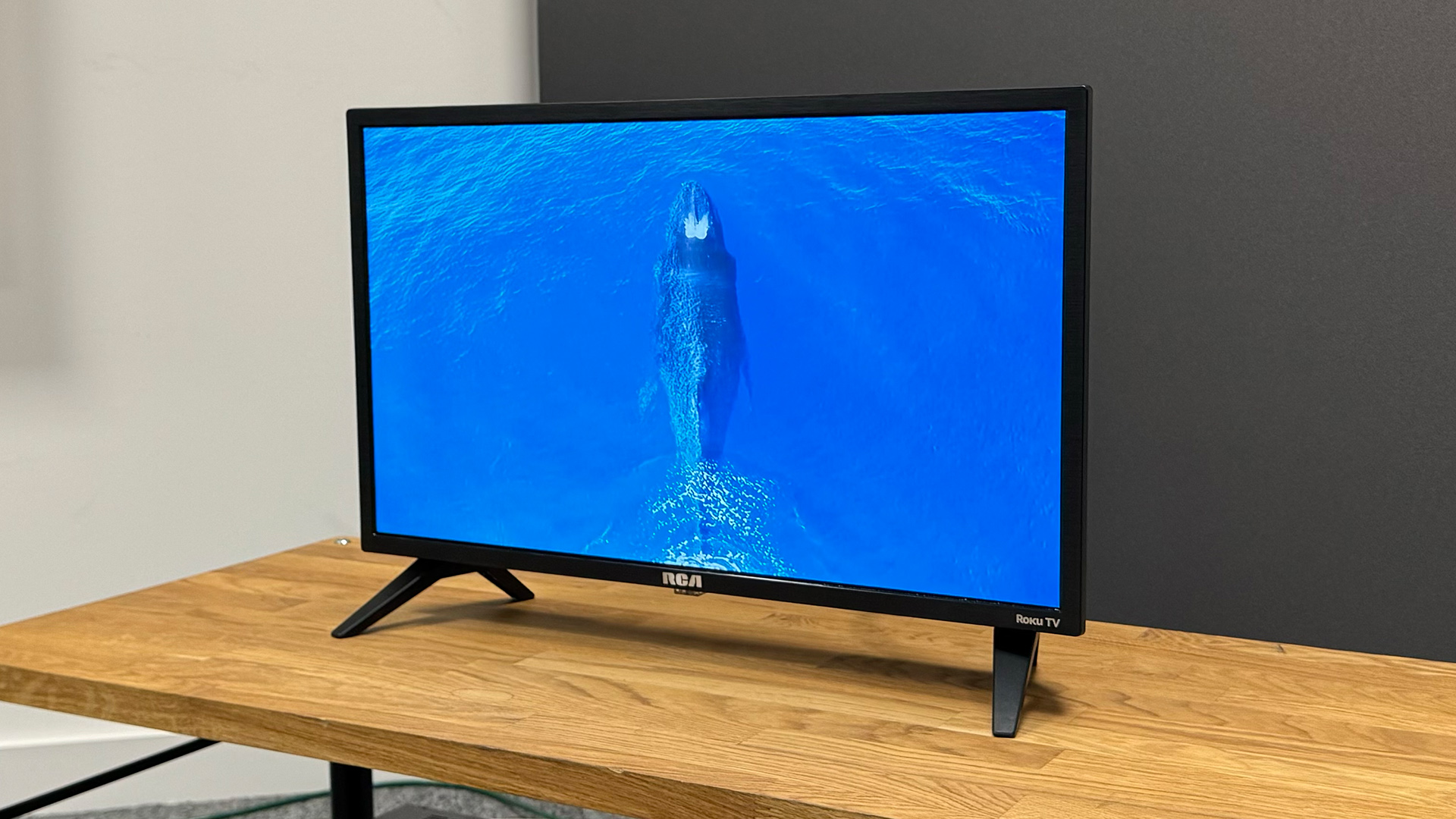
While its picture and sound are a touch too rough and ready to earn the RCA RK24HF1 Roku TV an unqualified recommendation, it picks its budget battles intelligently enough, with enough awareness of what most of its likely buyers will most want a 24-inch TV to do well. And this makes it, in the end, a much better bet than we’d expected it to be.
SCORES
- Picture 4
- Sound 3
- Features 4
MORE:
Read our review of the Samsung UE24N4300
Also consider the Toshiba 24WK3C63DB
Read our Amazon QL43F601 review
Best TV: flagship OLEDs and affordable flatscreens tried and tested







